Success and fame are things I imagine any game developer might want. We live in a world where more games are released each year than ever before, all of them rushing by in a frothing torrent of competition, fighting for air and a branch that will hoist them above and get them noticed. Few grasp it, but Citizen Sleeper most certainly did.
Released in 2022, and spread widely via Game Pass, this warm-hearted science fiction story about a distantly-controlled robot has now been played by more than a million people, and it made the game’s creator, Gareth Damian Martin – also known by their studio name Jump Over the Age (they contracted the artwork and music) – something of a star. A success.
It’s deserving of that success – it remains one of my favourite games of recent years. Though slight in stature, it smolders like a fire in my memory, held there by the touching relationships you forge with characters on a circular space station called The Eye. The game is a mixture of role-playing, strategy, dice-rolling and narrative, though really it’s a ponderance on identity and finding out where you belong. Who or what are you as a Sleeper? It’s up to you to figure it out.
Success, though, can be tricky to deal with. It creates expectations and thrusts people into a spotlight that can be fierce and withering. “At first, it’s very, very disconcerting,” Gareth Damian Martin says, talking to me in a video call shortly before Christmas. “It’s very tricky to deal with. You are absolutely drowning in praise and people sending you direct messages and emails, and sending you pictures of tattoos they’ve got and things like this.”
“But you quickly learn,” they say, “that you have to set up limits and control things. That it’s not about you; it’s often about the person who had that experience, and while your game facilitated that, it’s really what they brought to it. I found that I was much more comfortable when I started to focus on what it is that they were bringing to their experience of playing the game rather than what I was bringing on my side, and that made it a really pleasant experience.”
The other side of success is, of course, pressure, not just from the fanbase who now naturally want more, but also the self-imposed pressure to better what came before. In Damian Martin’s case, there’s something more, too: a pressure to use this rarely achieved stage, and the influence that comes with it, to say something about games and affect the course they might take hereafter.
“I feel a certain responsibility that comes with success,” Damian Martin says. “I feel lots of things about this medium, and I feel if I’m in the one percent of indie developers – and the even smaller percent of solo developers – who manage to make something and have that thing be successful, then I have responsibility towards putting things into the industry and into the world that contribute somehow to whatever I think the industry should be doing.
“Like, I really want the definition of RPGs to be expanded,” they add, using an example. “Tabletop games outside of video games are so rich and varied, and I really wish that video game RPGs were as rich and varied, but they’re really, sadly, not, in most cases – although there’s a huge amount of small RPGs being made now that are very exciting.”
Citizen Sleeper 2, then, is Damian Martin’s answer to this. “The sequel was made with a lot of pressure on it from that perspective. But it’s not a pressure that I want to run away from,” they say. “It’s something that I feel very strongly about.”
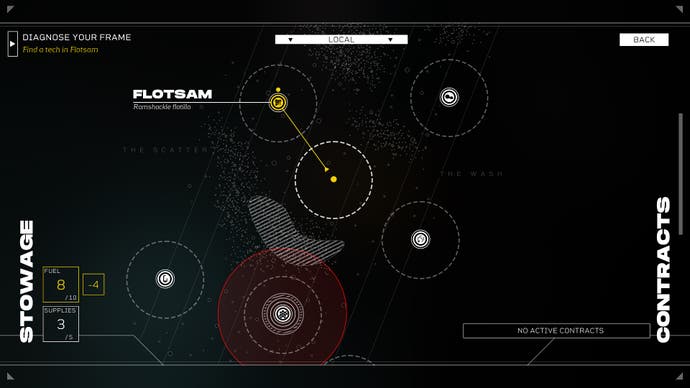
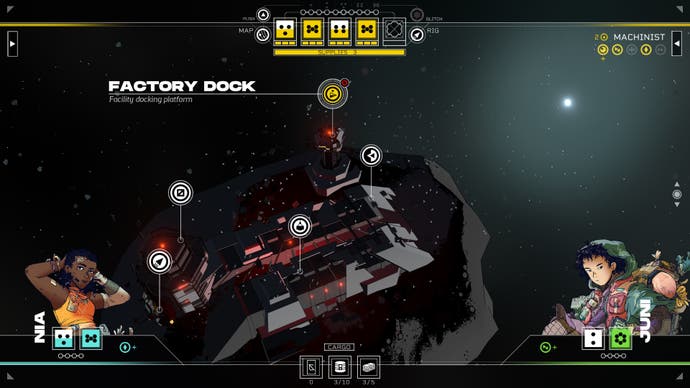
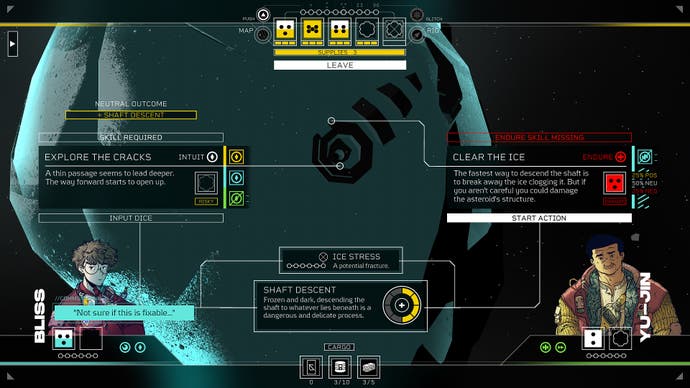
Damian Martin didn’t immediately go for a sequel, as surprising as that might sound now, given Citizen Sleeper’s apparent success. They were actually pitching a game that wasn’t Citizen Sleeper 2 to their publisher Fellow Traveller after the first game wrapped. They won’t say what that game was, though, because they still intend to return to it – “That’s actually going to be the next game [after Citizen Sleeper 2],” they reveal. But as Citizen Sleeper’s popularity increased, so did the allure of doing add-on content for it, and exploring what – if anything – might come next. They were still hesitant about doing a sequel, but a year of DLC experimentation later, they realised that the ideas they had for the series needed a new framework to enable them. They needed a new game.
From its conception, Citizen Sleeper 2 was designed to be different. “I never would have made this game if I was trying to make just more Citizen Sleeper,” Damian Martin says. That game is there, still exists, so a sequel didn’t need to repeat it. This game needed to be something else. And immediately what Damian Martin’s mind went to when conceiving it were the kinds of ragtag, ship-and-crew science fiction stories they’d so loved in Firefly, Farscape, Cowboy Bebop and – to use an example I’m sure you’ll all aware of – Mass Effect 2.
“I always loved those ship and crew stories and I spent so many years Googling ‘games like Mass Effect 2’ trying to find them,” Damian Martin says. But even playing Mass Effect 2 again wouldn’t quite scratch the itch, because there were things that bugged them about the game – things they didn’t like about it.
They didn’t like, for instance, the idea of Commander Shepard as a character, as “a kind of terrible secret policeman”, and there are things about the way the crew are handled that Damian Martin believed deadened them. Moreso, “There’s lots of stuff in Mass Effect that’s a bit goofy,” they say. “And it’s kind of wonderful, and I really love that, but it’s just not what I would make. I would never make something as goofy.”
They wanted their sci-fi world to feel more real and a like place that they could conceivably exist in. A place where someone who kills people for money bears all of the physical – and emotional – scars of someone in that line of work.
In Citizen Sleeper 2, you have a ship, for example – it’s one of the key differences between the two games. In it, you can fly to different hubs and into space to find things, whereas in the first game, you were tethered to The Eye. So what might having a ship – something other people don’t necessarily have in this world – mean? “It means people are drawn to you,” Damian Martin says. “And what kind of people might be drawn to someone who has a ship and is on the run? Well, it’s people who are also on the run.”
For Damian Martin, these connections between people are the key. Humanity is the ingredient that ties all of the ship-and-crew stories they like together.
“To me it seemed like such an opportunity,” they say, “because not only has no one really done it in a way that I would have liked to have seen it done, but also, Citizen Sleeper is a license to make something very human. Everyone’s expecting Citizen Sleeper 2 to be human. I’ve established a language and a world and I have so much permission to make something like that, so it felt like a really fun experiment to see ‘what does this genre of thing feel like when it’s in the Citizen Sleeper universe?'”

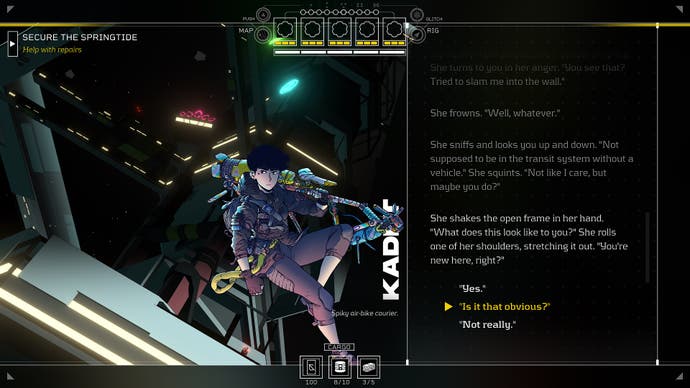
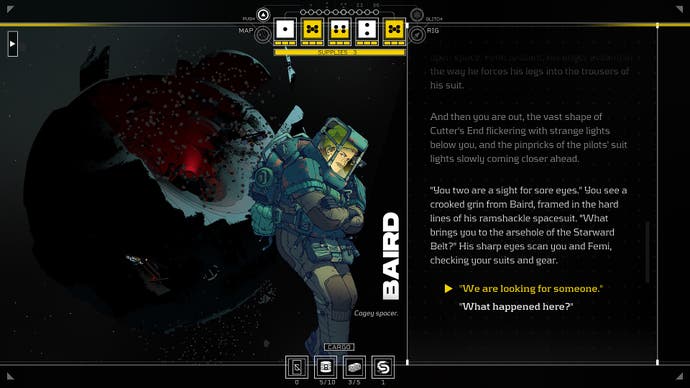
Something Damian Martin really wanted the sequel to do in a much more pronounced way was to feel like an RPG. Many people described the original game as a visual novel, because it often presented a lot of text to the player to read, and the label bugs Damian Martin. “I don’t think people quite realise how much of the emotional experience of Citizen Sleeper is mechanically driven,” they say. “They underestimate it.” But there’s no underestimating it in Citizen Sleeper 2.
This is a game that introduces concepts and systems like Stress to the gameplay mix, which builds when you fail dice rolls, eventually taking dice away from you or your companions if you let it accrue too much. This works in tandem with new multi-stage Contract missions to really squeeze you when the pressure is on, and make things tense. Tension itself is a much more pervasive concept in the sequel than in Citizen Sleeper 1.
Character classes differ in clearer ways, too, and are now unable to access all of the available skill trees, meaning you have to specialise and think about the role you want to play, because you can’t do everything. (You could in Citizen Sleeper 1 because Damian Martin knew that the game was new and would need to win people over, “so I tried to be generous because it’s the first time people are playing something like this and I was a little afraid of how people would react.” But it’s not so now.) Classes also have differing Push abilities to gamble on dice outcomes with. The whole package felt to me, while playing a demo, mechanically more developed and more exciting than before. And crucially, it felt like an RPG.
“I went through an entropic process of falling apart and being put back together again. It imbued so much into the game”
Another aspect that made Citizen Sleeper stand out was its political nature. It had things to say about capitalism and about identity and refugees. But it was never intended as a game to stage political debates in, Damian Martin tells me. Those things are there simply because they’re topics prevalent in Damian Martin’s – and our – lives. Brexit themes in the first game came from Damian Martin experiencing the alienation that their wife, who’s Romanian, felt because of it. “And the identity [themes]: it’s less of an identity struggle and it’s more just a reflection of my own experiences,” they say.
Citizen Sleeper 2 sponges up Damian Martin’s more recent life experiences in similar ways. Reactions to the Ukraine war, for instance, and what it means to live in a world in proximity to a conflict. “Again,” they say, “that came not from reading about it on the news but from going to Romania, and Romania is right there [next to Ukraine], and hearing about sea mines washing up on the Black Sea beaches.” Also, hearing different perspectives to a war based on where in the world you were. “It makes you realise how variable all of these things are and how subjective they are,” they say. “So I wanted the game to take place on the shores of war.”
A more prominent influence came from health struggles Damian Martin was having personally while making the game. “It has been pretty rough,” they say, reflecting on the game’s two-year development. This is mostly because they had to have the same surgery twice during development, once in 2023 and then again in 2024, because it didn’t heal correctly the first time. “That had a very strong influence on Citizen Sleeper 2 and the general vibe of it,” they say, smiling.
It was an experience that altered the key development word Damian Martin had for Citizen Sleeper 2 – something they like to do for all of their games. In Other Waters had the word ‘symbiosis’ and Citizen Sleeper 1 had the word ‘precarity’, and for a while, Citizen Sleeper 2 had ‘crisis’. But it wasn’t particularly emotional as a word, and then, as their health issues continued, a more fitting word appeared: ‘entropy’.
“I think that’s because I went through an entropic process of falling apart and being put back together again,” they say. “It imbued so much into the game. There’s this line in the gameplay reveal trailer where Serafin says, ‘We’ve got to bounce back,’ and this started being the mantra for Citizen Sleeper 2. It’s all about bouncing back from a gameplay perspective and very much from a development perspective – I was very eager to come back from the surgeries with a real energy of like, ‘I’m going to do it anyway.'” With that, they laugh.
These are some of the ideas and experiences that have gone into making Citizen Sleeper 2, a game that’s bigger and broader than the original, with around twice the number of words in (230,000) it – though a lot of these are nestled in diverging paths. It’s impossible to see everything during one playthrough this time, stretched as the game is across multiple hub areas.
It should be a grand finale for what we now know will be the last Citizen Sleeper video game. After this, Damian Martin will go back to making the game that was put on ice before Citizen Sleeper 2 development began, while simultaneously figuring out who to make a fully fledged Citizen Sleeper tabletop role-playing game with. TTRPGs are a passion of theirs, of course, and have heavily inspired the Citizen Sleeper series, so giving it back to TTRPG creators will be like a full-circle moment for them.
“I really like this idea of setting down my version of Citizen Sleeper and then opening up the space for people to take over,” Damian Martin says. “Because one of the really beautiful things about the success of the first game was people coming to me and saying, ‘Oh, this really relates to the experience of being disabled, or of having this,’ and just feeling like, oh, wow – genuinely feeling a bit honoured that my vulnerability in making Citizen Sleeper created a space in which people could be also vulnerable. I found that solidarity to be very moving.
“In the end, that’s where I’ve felt what Citizen Sleeper is about, what a Sleeper is about. A Sleeper is an opportunity for us to have this other robot body that allows for difference. I’m interested in how Sleepers could be this space for people to discuss how they feel about their bodies and how they feel about existing. Because that’s what our bodies are: they are the existing part that touches and feels and senses, if they’re anything – they’re not separate from us.
“That feels like a thing to explore. So I’d like to go and do that a little bit and then allow people to tell those stories. I mean, people already have, but to help people do that. That feels like where Citizen Sleeper should go.”
fbq('init', '560747571485047');
fbq('track', 'PageView'); window.facebookPixelsDone = true;
window.dispatchEvent(new Event('BrockmanFacebookPixelsEnabled')); }
window.addEventListener('BrockmanTargetingCookiesAllowed', appendFacebookPixels);
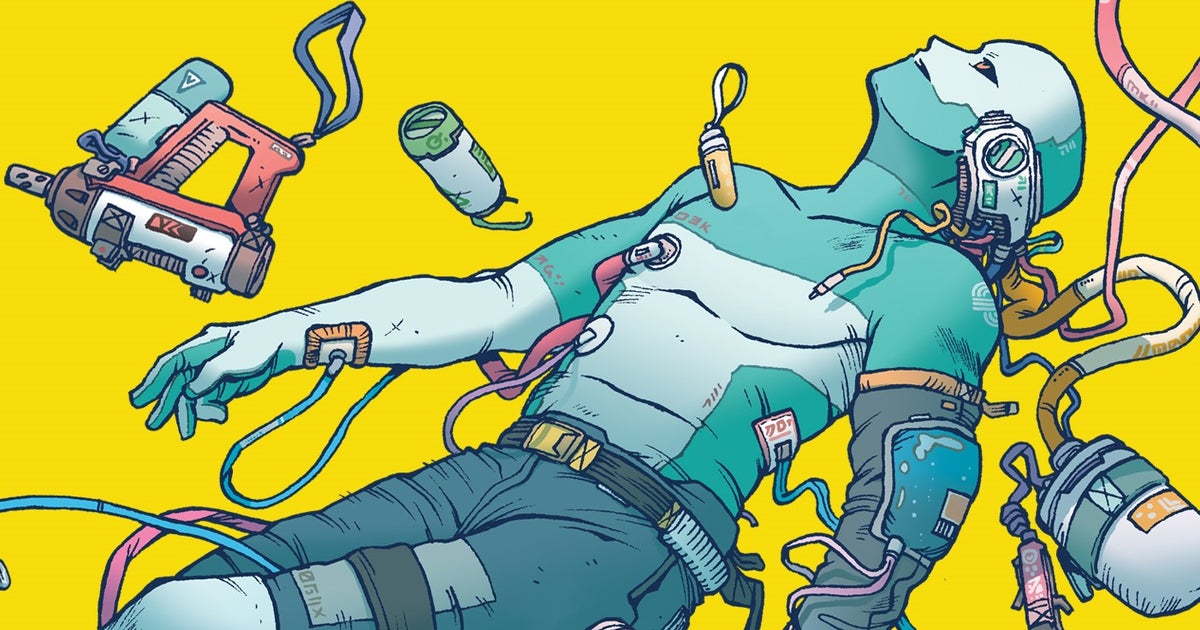
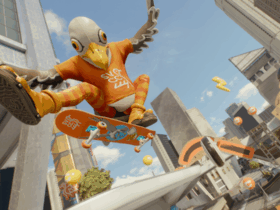
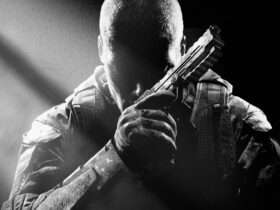





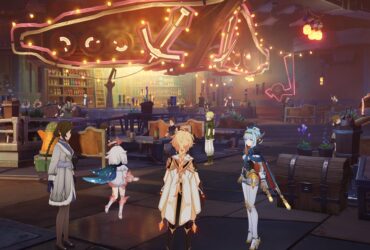
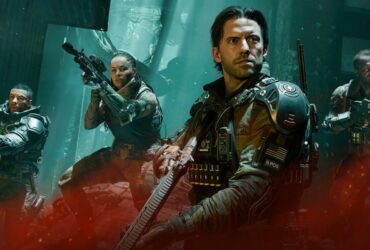
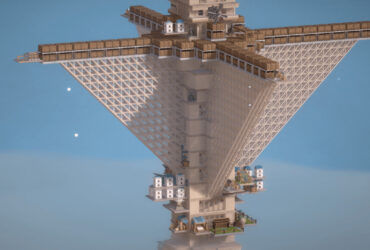
Leave a Reply